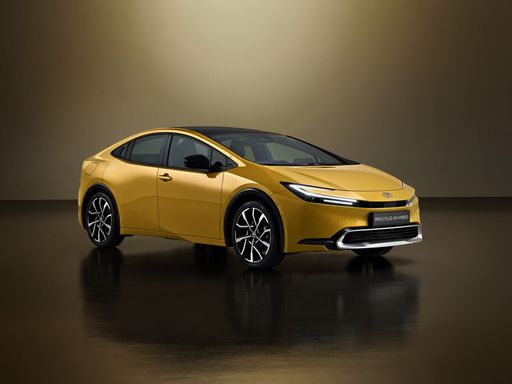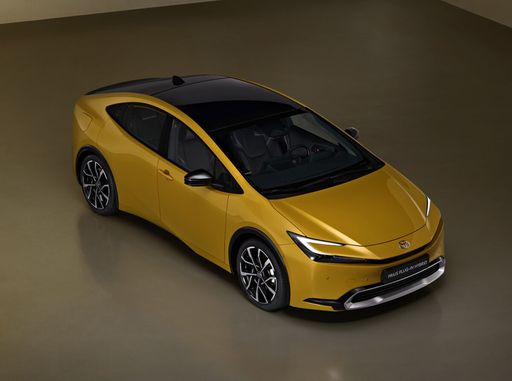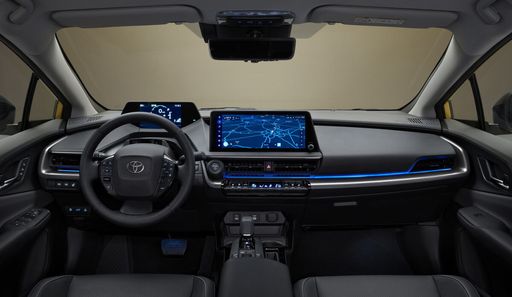Mazda 3 Sedan vs Toyota Prius – Which one offers the better deal?
Both models have their strengths – but which one suits you more?
Compare performance, efficiency, price and space directly: Mazda 3 Sedan or Toyota Prius?
Here’s where it gets real: The technical differences in detail
Costs and Efficiency: When it comes to price and running costs, the biggest differences usually appear. This is often where you see which car fits your budget better in the long run.
Mazda 3 Sedan has a significantly advantage in terms of price – it starts at 25000 £, while the Toyota Prius costs 39400 £. That’s a price difference of around 14443 £.
Fuel consumption also shows a difference: the Toyota Prius manages with 0.50 L and is therefore convincingly more efficient than the Mazda 3 Sedan with 5.50 L. The difference is about 5 L per 100 km.
Engine and Performance: Power, torque and acceleration are the classic benchmarks for car enthusiasts – and here, some clear differences start to show.
When it comes to engine power, the Toyota Prius has a to a small extent edge – offering 223 HP compared to 186 HP. That’s roughly 37 HP more horsepower.
In acceleration from 0 to 100 km/h, the Toyota Prius is slightly quicker – completing the sprint in 6.80 s, while the Mazda 3 Sedan takes 8.10 s. That’s about 1.30 s faster.
In terms of top speed, the Mazda 3 Sedan performs a bit better – reaching 216 km/h, while the Toyota Prius tops out at 177 km/h. The difference is around 39 km/h.
Space and Everyday Use: Cabin size, boot volume and payload all play a role in everyday practicality. Here, comfort and flexibility make the difference.
Both vehicles offer seating for 5 people.
In curb weight, the Mazda 3 Sedan is slightly lighter – 1420 kg compared to 1620 kg. The difference is around 200 kg.
In terms of boot space, the Mazda 3 Sedan offers evident more room – 450 L compared to 284 L. That’s a difference of about 166 L.
When it comes to payload, Mazda 3 Sedan noticeable takes the win – 481 kg compared to 375 kg. That’s a difference of about 106 kg.
All in all, the Toyota Prius shows itself to be dominates this comparison and secures the title of DriveDuel Champion.
It impresses with the more balanced overall package and proves to be the more versatile companion for everyday use.
Mazda 3 Sedan
The Mazda 3 Sedan stands out with its elegant and sleek design, capturing attention on the road with its refined aesthetics. Inside, it offers a well-crafted and comfortable cabin, providing a pleasurable driving experience marked by quality materials and advanced features. The car's performance is reliable and smooth, making it a versatile choice for both city driving and long-distance journeys.
detailsToyota Prius
The Toyota Prius stands as a pioneer in the realm of hybrid vehicles, offering an eco-friendly driving alternative with its innovative technology. Its aerodynamic design and comfortable interior make it a practical choice for those looking to reduce their carbon footprint without sacrificing style. Additionally, the Prius boasts a reputation for reliability and efficiency, contributing to its lasting popularity among environmentally conscious drivers.
details @ Toyota
@ Toyota
 @ Toyota
@ Toyota
 @ Toyota
@ Toyota
 @ Toyota
@ Toyota

|
|
|
|
|
Costs and Consumption |
|
|---|---|
|
Price
25000 - 34200 £
|
Price
39400 - 45800 £
|
|
Consumption L/100km
5.5 - 6.1 L
|
Consumption L/100km
0.5 - 0.7 L
|
|
Consumption kWh/100km
-
|
Consumption kWh/100km
-
|
|
Electric Range
-
|
Electric Range
72 - 86 km
|
|
Battery Capacity
-
|
Battery Capacity
-
|
|
co2
123 - 135 g/km
|
co2
12 - 17 g/km
|
|
Fuel tank capacity
51 L
|
Fuel tank capacity
40 L
|
Dimensions and Body |
|
|---|---|
|
Body Type
Sedan
|
Body Type
Hatchback
|
|
Seats
5
|
Seats
5
|
|
Doors
4
|
Doors
5
|
|
Curb weight
1420 - 1492 kg
|
Curb weight
1620 - 1630 kg
|
|
Trunk capacity
450 L
|
Trunk capacity
284 L
|
|
Length
4660 mm
|
Length
4599 mm
|
|
Width
1795 mm
|
Width
1782 mm
|
|
Height
1440 mm
|
Height
1470 mm
|
|
Max trunk capacity
-
|
Max trunk capacity
-
|
|
Payload
467 - 481 kg
|
Payload
365 - 375 kg
|
Engine and Performance |
|
|---|---|
|
Engine Type
Petrol MHEV
|
Engine Type
Plugin Hybrid
|
|
Transmission
Manuel, Automatic
|
Transmission
Automatic
|
|
Transmission Detail
Manual Gearbox, Automatic Gearbox
|
Transmission Detail
CVT
|
|
Drive Type
Front-Wheel Drive
|
Drive Type
Front-Wheel Drive
|
|
Power HP
140 - 186 HP
|
Power HP
223 HP
|
|
Acceleration 0-100km/h
8.1 - 9.8 s
|
Acceleration 0-100km/h
6.80 s
|
|
Max Speed
203 - 216 km/h
|
Max Speed
177 km/h
|
|
Torque
238 - 240 Nm
|
Torque
-
|
|
Number of Cylinders
4
|
Number of Cylinders
4
|
|
Power kW
103 - 137 kW
|
Power kW
164 kW
|
|
Engine capacity
1998 - 2488 cm3
|
Engine capacity
1998 cm3
|
General |
|
|---|---|
|
Model Year
2025
|
Model Year
2023
|
|
CO2 Efficiency Class
D
|
CO2 Efficiency Class
B
|
|
Brand
Mazda
|
Brand
Toyota
|
What drivetrain options does the Mazda 3 Sedan have?
The Mazda 3 Sedan is available as Front-Wheel Drive.
The prices and data displayed are estimates based on German list prices and may vary by country. This information is not legally binding.
